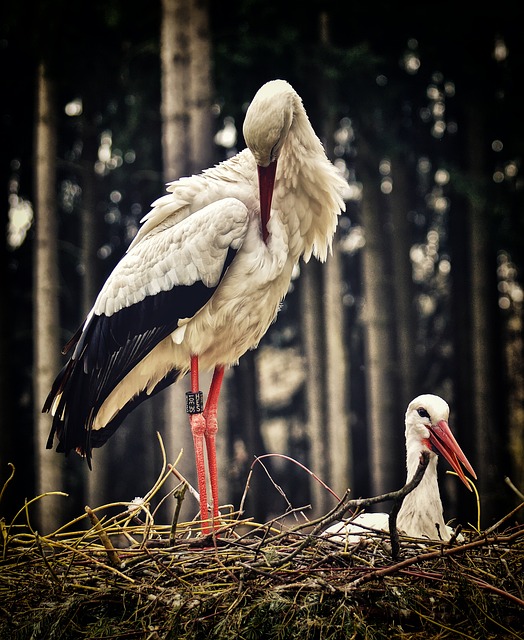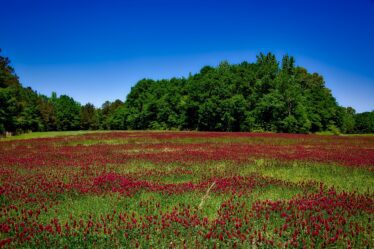
Wheeler National Wildlife Refuge, located in northern Alabama, is a sanctuary for wildlife and a haven for nature enthusiasts. Established in 1938 as a wintering area for migratory birds, the refuge spans over 35,000 acres across Limestone, Morgan, and Madison counties. It offers a diverse array of habitats, including wetlands, forests, and grasslands, making it a critical habitat for various wildlife species and a prime location for outdoor recreation. This comprehensive guide covers everything you need to know about Wheeler National Wildlife Refuge, from its wildlife and best times to visit, to recreational activities and conservation efforts.
Introduction to Wheeler National Wildlife Refuge
Wheeler National Wildlife Refuge is part of the National Wildlife Refuge System, which consists of protected areas managed by the U.S. Fish and Wildlife Service. The refuge is named after General Joseph Wheeler, a Confederate Army general and later a U.S. Army general. Its primary purpose is to provide a sanctuary for migratory birds, particularly waterfowl, but it also serves as a crucial habitat for a wide range of wildlife species.
Wildlife and Biodiversity
Birds
Wheeler National Wildlife Refuge is renowned for its birdwatching opportunities. Over 295 species of birds have been recorded here, making it one of the premier birding destinations in the southeastern United States.
- Migratory Waterfowl: During the winter months, thousands of ducks, geese, and swans flock to the refuge. Common species include mallards, northern pintails, American wigeons, and Canada geese.
- Sandhill Cranes: The refuge hosts one of the largest populations of wintering sandhill cranes in the eastern U.S. Visitors can observe these majestic birds from the observation building at the visitor center.
- Endangered Species: The refuge provides habitat for the endangered whooping crane, which has been successfully reintroduced to the area. Birdwatchers may also spot bald eagles, which nest in the refuge.
Mammals
The diverse habitats within the refuge support a variety of mammal species.
- White-tailed Deer: Commonly seen throughout the refuge, especially during early morning and late afternoon.
- Coyotes: These adaptable predators are frequently observed in the grasslands and forested areas.
- Beavers and Otters: Found in the wetland areas, these aquatic mammals contribute to the ecosystem by building dams and lodges.
Reptiles and Amphibians
The refuge’s wetlands and woodlands provide ideal conditions for numerous reptiles and amphibians.
- American Alligators: Although not commonly seen, alligators inhabit the refuge’s wetlands.
- Turtles and Snakes: Various species of turtles and non-venomous snakes can be found in the refuge.
Fish
The refuge’s waterways, including the Tennessee River and its tributaries, are home to diverse fish species.
- Bass and Crappie: Popular among anglers, these fish are abundant in the refuge’s waters.
- Catfish and Bluegill: These species are also commonly caught by fishermen.
Best Time to Visit
- Fall and Winter: The best time to visit for birdwatching is from November to February, when migratory waterfowl and sandhill cranes are present in large numbers. The weather is cooler, making it more comfortable for outdoor activities.
- Spring: March to May is an excellent time to observe migrating songbirds and wildflowers in bloom. The weather is mild, and the landscape is vibrant with new growth.
- Summer: June to August can be hot and humid, but it’s a great time for fishing and observing resident wildlife. Early morning and late evening are the best times to avoid the heat.
Recreational Activities
Birdwatching
Birdwatching is one of the main attractions at Wheeler National Wildlife Refuge. The visitor center has an observation building with large windows overlooking a wetland area, providing excellent birdwatching opportunities.
- Observation Decks: Several observation decks are located throughout the refuge, offering prime spots for birdwatching.
- Birding Trails: The Atkeson Cypress Trail and the Beaverdam Swamp Boardwalk Trail are popular for birding.
Fishing
Fishing is allowed in designated areas of the refuge, including the Tennessee River and several ponds and creeks.
- Boat Launches: There are several boat launches available for anglers with boats.
- Bank Fishing: Fishing from the shore is permitted in certain areas, providing opportunities for catching bass, crappie, catfish, and more.
Hiking
The refuge offers several trails for hiking and nature walks.
- Dancy Bottom Trail: A 2-mile trail that winds through bottomland hardwood forest and along a wetland area.
- Beaverdam Swamp Boardwalk Trail: A short boardwalk trail that takes visitors through a swampy area, ideal for observing wetland wildlife.
Wildlife Observation
In addition to birdwatching, visitors can observe a variety of wildlife from several designated observation points.
- Observation Tower: Located near the visitor center, the tower offers panoramic views of the surrounding wetlands and is an excellent spot for wildlife observation.
- Scenic Drives: Several roads within the refuge provide scenic drives with opportunities to observe wildlife from the comfort of your vehicle.
Conservation Efforts
Wheeler National Wildlife Refuge is dedicated to the conservation of wildlife and their habitats. Various efforts are undertaken to maintain and enhance the refuge’s ecosystems.
- Habitat Management: Active management practices such as controlled burns, water level manipulation, and invasive species control are used to maintain healthy habitats.
- Research and Monitoring: The refuge conducts ongoing research and monitoring of wildlife populations and habitats to inform management decisions.
- Education and Outreach: The refuge offers educational programs and events to raise awareness about wildlife conservation and the importance of preserving natural habitats.
Visitor Information
- Visitor Center: The visitor center, located near Decatur, Alabama, provides exhibits, educational programs, and information about the refuge. The observation building at the visitor center is a prime spot for birdwatching.
- Hours of Operation: The refuge is open daily from sunrise to sunset. The visitor center is open Monday through Saturday from 9 a.m. to 4 p.m., and closed on Sundays and federal holidays.
- Admission: There is no fee to enter Wheeler National Wildlife Refuge. Donations are accepted and help support conservation efforts and educational programs.
Practical Tips
- Weather: Check the weather forecast before your visit and dress appropriately. Bring layers, as temperatures can vary throughout the day.
- Bug Protection: Bring insect repellent, especially in the warmer months, to protect against mosquitoes and other biting insects.
- Binoculars and Camera: Bring binoculars for birdwatching and a camera to capture the beauty of the refuge.
- Respect Wildlife: Maintain a safe distance from wildlife and do not disturb or feed the animals. Stay on designated trails and observation areas.
Conclusion
Wheeler National Wildlife Refuge is a treasure trove of natural beauty and wildlife diversity. Whether you’re an avid birder, a nature enthusiast, or simply seeking a peaceful outdoor escape, the refuge offers something for everyone. Its commitment to wildlife conservation and habitat preservation ensures that future generations can continue to enjoy this remarkable sanctuary. Plan your visit to Wheeler National Wildlife Refuge and experience the wonders of nature up close.


